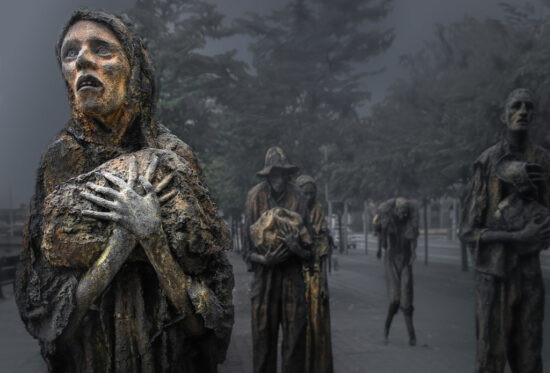Introduction
Knut Hamsun’s seminal work, Hunger, explores the depths of human psychology and experience. First published in 1890, the novel is a captivating exploration of a struggling writer’s descent into poverty, hunger, and madness. This article aims to provide an in-depth analysis of Hunger, examining its plot and storyline, characters, themes and symbols, writing style, setting and atmosphere, historical context, and its impact and reception in the literary world.
Plot and Storyline
Hunger follows the protagonist, an unnamed struggling writer, as he navigates the harsh realities of poverty and starvation in late 19th-century Oslo. The novel opens with the writer’s desperate attempts to secure employment and find sustenance, but his efforts are repeatedly thwarted. As the story progresses, the writer’s physical and mental states deteriorate, leading to hallucinations, paranoia, and a distorted perception of reality. The narrative paints a vivid picture of the protagonist’s inner turmoil and the relentless hunger that consumes him, both literally and metaphorically. Without revealing major spoilers, the novel takes readers on a haunting journey through the depths of human desperation and the fragility of the human psyche.
Characters
Hunger primarily focuses on the unnamed protagonist, whose internal monologue provides a raw and unfiltered account of his experiences. The writer’s character undergoes a profound transformation throughout the novel, as hunger and deprivation erode his sanity and sense of self. Hamsun skillfully portrays the protagonist’s descent into madness, capturing his psychological struggles and inner conflicts. Secondary characters, such as the landlady, other writers, and various acquaintances, play supporting roles that highlight the protagonist’s isolation and the indifference of society towards his plight. These characters serve as mirrors that reflect the protagonist’s deteriorating mental state and emphasize the themes of loneliness and alienation.
Themes and Symbols
Hunger explores several compelling themes that resonate with readers on a visceral level. The overarching theme is the destructive power of hunger, both literal and metaphorical. The protagonist’s physical hunger serves as a representation of his existential hunger for approval, validation, and artistic fulfillment. Hamsun delves into the complexities of human desire, highlighting the self-destructive nature of obsession and the pursuit of perfection. The novel also delves into themes of isolation, social alienation, and the dehumanizing effects of poverty. Through vivid descriptions and introspective passages, Hamsun invites readers to reflect on the human condition and the innate struggles faced by individuals in a cold and indifferent world.
Writing Style
Hamsun’s writing style in Hunger is characterized by its intense introspection and stream-of-consciousness narrative. The author’s use of vivid and evocative language captures the protagonist’s mental state and creates a sense of immediacy. Hamsun employs literary techniques such as repetition, fragmented sentences, and abrupt shifts in tone and perspective to mirror the protagonist’s fragmented psyche. The narrative structure, devoid of traditional plot progression, reflects the chaotic and unpredictable nature of the protagonist’s experiences. Hamsun’s writing style enhances the story by immersing readers in the protagonist’s inner world, allowing them to experience the disorienting effects of hunger and mental deterioration firsthand.
Setting and Atmosphere
Hunger is set in late 19th-century Oslo, a city characterized by its harsh climate, urban decay, and the stark divide between the haves and the have-nots. The setting plays a significant role in shaping the novel’s tone and atmosphere. The cold and unforgiving streets of Oslo mirror the protagonist’s internal struggles and the existential challenges he faces. Hamsun’s vivid descriptions of the urban landscape evoke a sense of desolation and despair, contributing to the overall mood of the novel. The setting’s oppressive atmosphere heightens the reader’s emotional involvement and enhances the portrayal of the protagonist’s desperate circumstances.
Historical, Social, or Political Context
Hunger was written during a period of social and political transformation in Norway. The novel reflects the anxieties and disillusionment prevalent in late 19th-century society, particularly among the urban working class. Hamsun’s portrayal of poverty, social marginalization, and the struggle for artistic recognition reflects the broader social issues of the time. Hunger can be seen as a critique of the prevailing social order and an exploration of the detrimental effects of rapid industrialization and urbanization on individual lives. The novel’s raw depiction of the human condition transcends its historical context, resonating with readers across different eras.
Impact and Reception
Hunger is widely regarded as a literary masterpiece and has had a significant impact on literature. Its innovative narrative style and exploration of the human psyche influenced subsequent generations of writers, including Franz Kafka and Marcel Proust. The novel’s unflinching portrayal of human suffering and the complexities of the human mind challenged traditional literary conventions and paved the way for modernist literature. Hunger received critical acclaim upon its release and has continued to garner praise throughout the years. It has been translated into numerous languages and has become a staple in literary curricula worldwide. Hunger’s cultural significance lies in its ability to shed light on the universal human experience of longing, desperation, and the quest for identity. The novel’s exploration of themes such as poverty, alienation, and the struggle for artistic expression continues to resonate with readers, making it a timeless work of literature.
How does Hunger by Knut Hamsun portray the theme of isolation and social alienation?
Hunger vividly portrays the theme of isolation and social alienation through the experiences of the unnamed protagonist. The protagonist’s marginalization by society worsens as he falls into poverty and hunger. The novel highlights the indifference and apathy of those around him, emphasizing the profound loneliness he experiences. The protagonist’s attempts to connect with others are met with rejection or indifference, exacerbating his sense of isolation. Hamsun’s portrayal of the protagonist’s struggles reflects the broader societal alienation prevalent in late 19th-century Oslo, where poverty and social class created stark divisions within the urban landscape. Through the protagonist’s isolation, Hunger explores the devastating effects of social marginalization on an individual’s mental and emotional well-being, ultimately underscoring the universal human need for connection and belonging.
How does Hunger use the theme of hunger, both literal and metaphorical, to explore the human condition?
Hunger employs the theme of hunger, both literal and metaphorical, as a powerful lens through which to explore the human condition. On a literal level, the protagonist’s physical hunger serves as a central motif, representing his dire circumstances and the harsh realities of poverty. Hamsun’s vivid descriptions of the protagonist’s starvation and his relentless pursuit of sustenance evoke a visceral understanding of the human need for survival. However, Hunger also delves into the metaphorical hunger that plagues the protagonist—an insatiable desire for recognition, validation, and artistic fulfillment. This metaphorical hunger reflects the universal human longing for purpose and meaning. By intertwining the protagonist’s physical and metaphorical hunger, the novel underscores the interconnectedness of physical and emotional nourishment, demonstrating how the absence of either can lead to the unraveling of the human psyche.
In what ways does Hunger comment on the societal and cultural context of late-19th-century Norway?
Hunger provides a critical commentary on the societal and cultural context of late-19th-century Norway, particularly in relation to rapid industrialization and urbanization. The novel exposes the dark underbelly of progress, revealing the detrimental effects of these societal shifts on the lives of individuals, particularly those on the fringes of society. Through the protagonist’s experiences, Hunger highlights the stark disparities between the rich and the poor, the privileged and the marginalized. Hamsun critiques the prevailing social order, portraying a society that is indifferent to the struggles of its most vulnerable members. The novel also explores the tension between traditional values and the changing landscape of modernity, capturing the anxieties and disillusionment of a society in flux. Hunger serves as a social critique, shedding light on the dehumanizing impact of poverty and the inherent flaws in a society that values material success over human dignity.
Final Conclusions
Hunger by Knut Hamsun is a powerful and haunting novel that delves into the depths of human suffering and the complexities of the human psyche. Through its gripping plot, well-developed characters, thought-provoking themes, and innovative writing style, the novel immerses readers in the protagonist’s harrowing journey. Hamsun’s vivid descriptions, introspective passages, and use of literary techniques create an atmospheric and immersive reading experience. Hunger’s exploration of social issues, its historical context, and its impact on literature solidify its status as a literary masterpiece. This timeless work continues to captivate readers, offering profound insights into the human condition and the enduring power of literature to illuminate the darkest corners of our existence.






